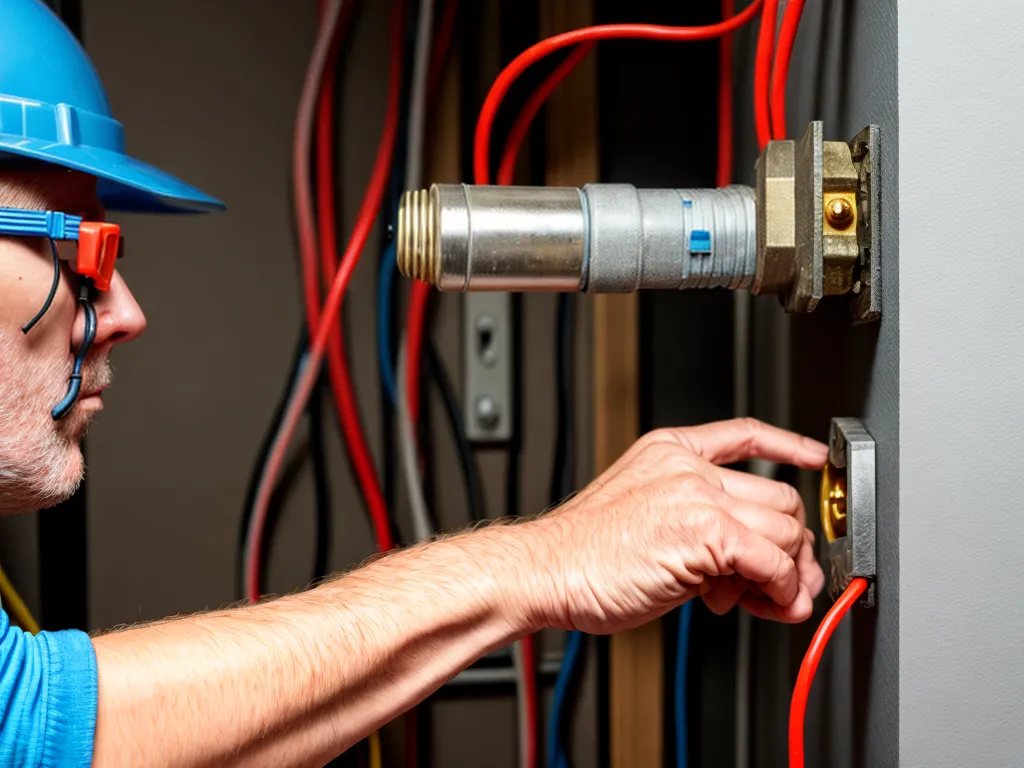
Knob and tube wiring was commonly installed in homes built before 1950. While it was suitable for the electrical needs of the time, this old wiring can be dangerous by today's standards. As a homeowner, it's important to be able to identify knob and tube wiring and understand the risks it poses. With some diligence and electrical know-how, I can find and fix any dangerous knob and tube wiring in my home.
What is Knob and Tube Wiring?
Knob and tube wiring consists of single black (hot) and white (neutral) wires that are separated by ceramic knobs and tubes.
- The black hot wires carry electricity from the main panel to outlets and fixtures.
- The white neutral wires return unused electricity back to the panel.
This type of wiring had no ground wire and was never intended to handle the electrical loads of modern households.
Key Characteristics of Knob and Tube Wiring
- Ceramic knobs - Wires are separated and supported by round or square ceramic knobs.
- Tubes - Wires pass through hollow ceramic tubes when they pass through walls, ceilings or studs.
- Insulation - Wires are fabric or rubber insulated. The insulation often deteriorates over time.
- Splices - Wires are spliced together with ceramic wire nuts or twisted seam connectors.
- Open air - Wires are run through open stud bays and ceiling joists, not through protective conduit.
Dangers of Knob and Tube Wiring
While knob and tube wiring has lasted surprisingly long in many homes, it does pose safety risks that I should take seriously.
Fire Hazard
The main danger is fire hazard. The old insulation on knob and tube wires often deteriorates, exposing bare copper conductors. This can lead to short circuits and excessive heat buildup. Fires often start where wires pass through wood studs and joists.
As knob and tube circuits are overloaded over the years, the fire danger goes up. I need to be very careful not to exceed the capacity of these old wires.
Shock Hazard
Exposed conductors can also create a shock hazard. If a bare hot wire makes contact with a grounded metal case like a sink, water pipe or duct work, it could electrify that surface and shock anyone who touches it.
Lack of Grounding
Proper grounding is essential for safety, but knob and tube wiring has no ground wires. Ungrounded wires and outlets can lead to shocks or damage to modern appliances and electronics.
Insurance Issues
Many insurance companies will not issue new policies on homes with knob and tube wiring due to the fire risks. Those that do often charge a higher premium or require that the wiring be replaced.
Locating Knob and Tube Wiring
Finding all the existing knob and tube wiring is the essential first step before I can fix or replace it. Here are the best ways to locate it:
Attic and Basement
I need to thoroughly inspect the attic (if accessible) and basement for the distinctive ceramic knobs, tubes and fabric-insulated wires. I may need to move a lot of insulation and stored items to gain full access.
Behind Walls
Removing wall plate covers on outlets and switches can reveal old wiring. I need to check inside cabinets and chase walls as well.
Wiring Details
I should trace wires from outlets and fixtures back as far as possible to find splices, routes into walls, and connections to the electrical panel.
Labels and Documentation
If the previous homeowner left behind a diagram of wiring runs, it can provide valuable clues about the location of knob and tube circuits.
Evaluating Safety and Function
Once I've mapped out all the existing knob and tube wiring, I need to thoroughly evaluate its current safety and performance.
Visual Inspection
I will closely examine the full length of wires for signs of:
- Brittle, cracked insulation that exposes copper conductors
- Discoloration from overheating
- Spliced connections that are loose or corroded
Thermal imaging can also help identify hot spots.
Wiring Capacity
I need to measure wire gauges and circuit loads to ensure knob and tube circuits are not overloaded beyond original specifications. This requires meticulous load calculations for all outlets and fixtures.
Electrical Testing
Using a multimeter, I can test for:
- Voltage drops under load that indicate undersized wiring
- Open neutral or hot wires
- Faulty grounds on 3-prong outlets
Checking for ground faults and arc faults also provides useful safety information.
Repairing or Replacing Knob and Tube Wiring
Once I've identified any risky or deficient knob and tube wiring in my home, I have two options - repair it or replace it completely.
Repairing Knob and Tube Wiring
If the original conductors are in good condition, I may be able to just:
- Replace degraded insulation using approved techniques
- Splice in a separate ground wire where needed
- Upgrade fuse and breaker panels
However, this is generally a short term fix.
Replacing Knob and Tube Wiring
For a permanent solution, I will likely need to:
- Run all new wiring with insulated cables in protective conduit
- Install a properly grounded and bonded system
- Add GFCI outlets for enhanced protection
- Use correct wire gauges for modern loads
Replacing knob and tube wiring is a major project, but well worth it for safety. I should hire a licensed electrician if I am not 100% confident in my electrical skills.
Protecting My Home with Safe Electrical
Finding and remediating any remaining knob and tube wiring gives me great peace of mind. By taking the right precautions, I can protect my family from fire and shock hazards. Investing in modern, code-compliant electrical wiring allows me to light up my home with safety.